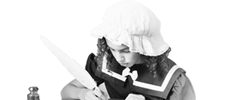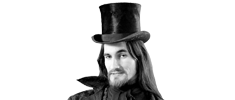High Sherrifs of Lancashire 1272-1327 by Colin Penny Phd
Part three
Sir Ranulph De Dacre (1272-1274): From Dacre in Cumbria. The son of William de Dacre (died c.1258), he married Joane de Luci; the marriage produced a son, William (1265-1318), who married Joane Garnet, a descendent of Benedict Garnet (Sheriff 1194-96). This family became Lords of the Northern Marches, and were responsible for the construction of Dacre Castle. Ranulph was Sheriff of Cumberland (1268-70) and Sheriff of Yorkshire (1278-80). He died on 3rd May 1286.
Note: The sheriffs who held office between 1275 and 1281 are still very much open to debate.
Sir Henry Lea (1282-1284): From Lea, near Preston. He was executed, alongside Adam Banastre, in 1315 for entering into a rebellion against Thomas, Earl of Lancaster (at this time a favourite of Edward II); also present on the side of the rebels was Sir Ralph de Bickerstath (sheriff 1309-1315). Henry�s sister, Sybil, inherited the family estate, and she subsequently married Sir Richard de Hoghton.
Gilbert De Clifton (1284-1290): The son of William de Clifton (c.1227-c.1253), he was born in about 1253 and died around 1323. Gilbert was a Steward of the powerful de Lacy family, and Seneschal of Blackburnshire.
Sir Ralph de Montjoy (1291-1302): Descended from Robert de Montjoy (Sheriff 1223-1226), the family held lands in Wigan, Derbyshire and Nottinghamshire. In 1297 he was summoned to take part in Edward I’s campaigns in Scotland
Richard de Hoghton (dates uncertain): Born at Hoghton Tower, Preston, in about 1284. He married Sybil de Lea in 1309, and thus inherited all of the de Lea estates; the marriage produced two surviving children, Sybil de Hoghton, and Sir Adam de Hoghton.
Sir Thomas Travers (1302-1307): It may be the case that the tenure of Richard de Hoghton (above) should be fitted somewhere in this period. Sir Thomas was from Nateby, near Garstang, and was a descendant of a ‘Travers’ who fought alongside William I at the Battle of Hastings. Sir Thomas was born in 1251, and was the son of Laurence FitzTravers. He married Isabella, the daughter of William Nateby, and was father to Lawrance Travers (d. 1346). Sir Thomas was present at the Lincoln Parliament in 1301, and died on 1st August 1334 at Nateby Hall; the family also owned Tulketh Hall.
William Gentyl (1307-1309): From Poulton-le-Sands. Little is known of the career of William, but he certainly held lands in Skerton. An Agnes le Gentyl, daughter of Ranulf le Gentyl, is recorded as marrying Robert de Washington of Carnforth (died c.1348) – a forebear of the first president of the United States of America. At some point during the 14th century their lands fell by marriage to the Lawrence family.
Sir Ralph de Bickerstath (Bickerstaffe) (1309-1315): From Bickerstaffe, near Ormskirk. Took part, alongside Henry de Lea, in the 1315 rebellion against Thomas, Earl of Lancaster. He was seriously wounded in a disastrous battle at Preston, and fled to sanctuary in Croston Church where he died of his wounds.
Sir Edmund de Neville (1315-1317): From Hornby, near Lancaster. The son of John de Neville and Margaret de Longvilliers. He was instrumental in crushing the rebellion of Adam de Banestre in 1315. He was also Lord of Liversedge in Yorkshire.
Sir Henry de Malton (1317-1320): From Malton in Yorkshire; sheriff of Cumberland 1323-1325.
William Gentyl (1320-1322): The son of the sheriff of 1307-1309.
Robert de Leyburn (1322-1323): From Aykhurst in Cumberland, but also with lands in Hope and Salford. He was born in 1273, and married Sarah de Harcla in about 1316. During his period as sheriff, Lancaster Castle was sacked by Robert the Bruce (following his victory at Bannockburn in 1321), and both William and Richard de Preston were ordered by Edward II to render aid to Robert de Leyburn. At around this time Robert was also keeper of Egremont Castle; he died in 1327
John Darcy (1323): The family possessed lands in Temple Newsham and Templehurst in Yorkshire. Born in about 1280, perhaps at Knaith in Lincolnshire, he was the son of Roger de Darcy and Isabel D’Aton. John became one of the most trusted advisors to king Edward III, and was appointed sheriff of Yorkshire (1327-1328), and later sheriff of Nottingham and Derbyshire. He was first steward to the king between 1337 and 1340, and then chamberlain 1342-1346. In 1339/40 he was appointed Lord Justice of Ireland, but rarely left the king’s council (an office he resigned in 1343/44), and was summoned to Parliament in 1331, 1333 and 1341. In 1342 John took part in the Earl of Northampton’s expedition to Flanders, and was made Constable of Nottingham Castle from 1343/44, and of the Tower of London from 1345/46. Throughout his adult life he took part in a number of wars against the Scots and French, and fought at the battle of Crecy (1346); in that same year the king sent him home as part of a delegation to announce the victory in Parliament. John’s first wife was Emmeline, the daughter of Sir Walter of Silkstone; his second was Joan, widow of Thomas (FitzJohn), Earl of Kildare, and daughter of Richard de Burgh, Earl of Ulster. Highly unpopular with large sections of the nobility, John was created the first Lord Darcy of Knaith, and died on 30th May 1347; he was buried at Gisborough Priory
Sir Gilbert de Southworth (1323-1326): From Southworth, near Warrington. Married Alicia Dewyas in about 1322 – the year in which his wife’s home at Salmesbury was destroyed by Robert the Bruce. Gilbert was responsible for the building of Salmesbury Hall in about 1330, which remained the home of the Southworths until 1678.
Robert de Leyburn (1326): Second appointment, died in office.
Sir Geoffrey de Warburton (1327): The family owned lands in Arley and Warburton in Cheshire. He was the son of Sir Peter Dutton, who assumed the surname Warburton, and was married to Margaret – the marriage produced a son, also named Geoffrey.








